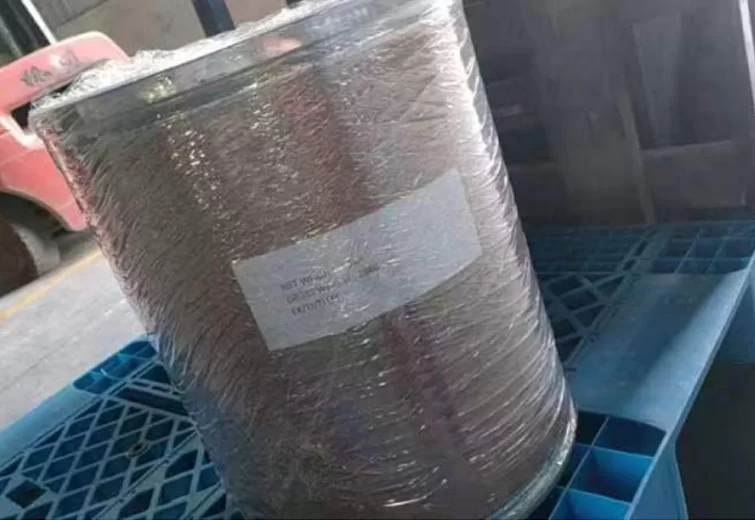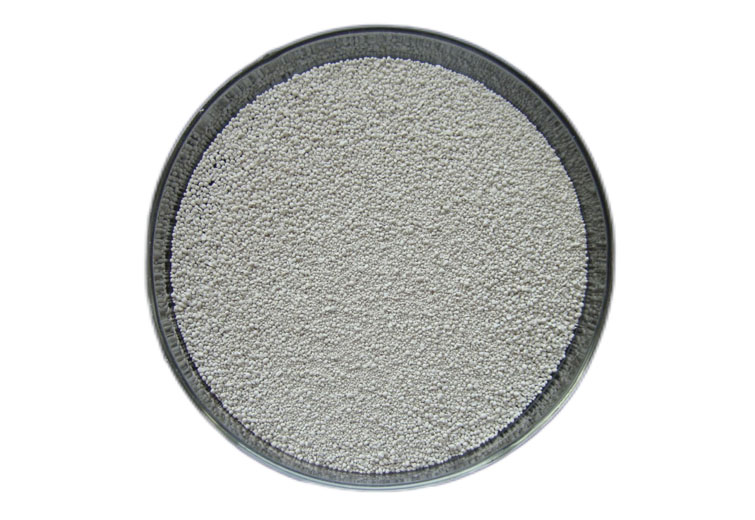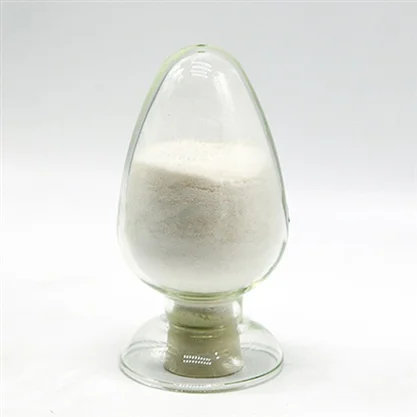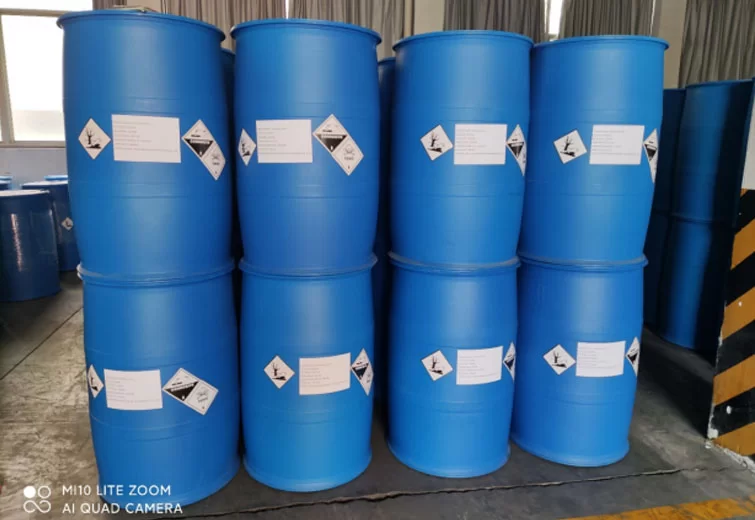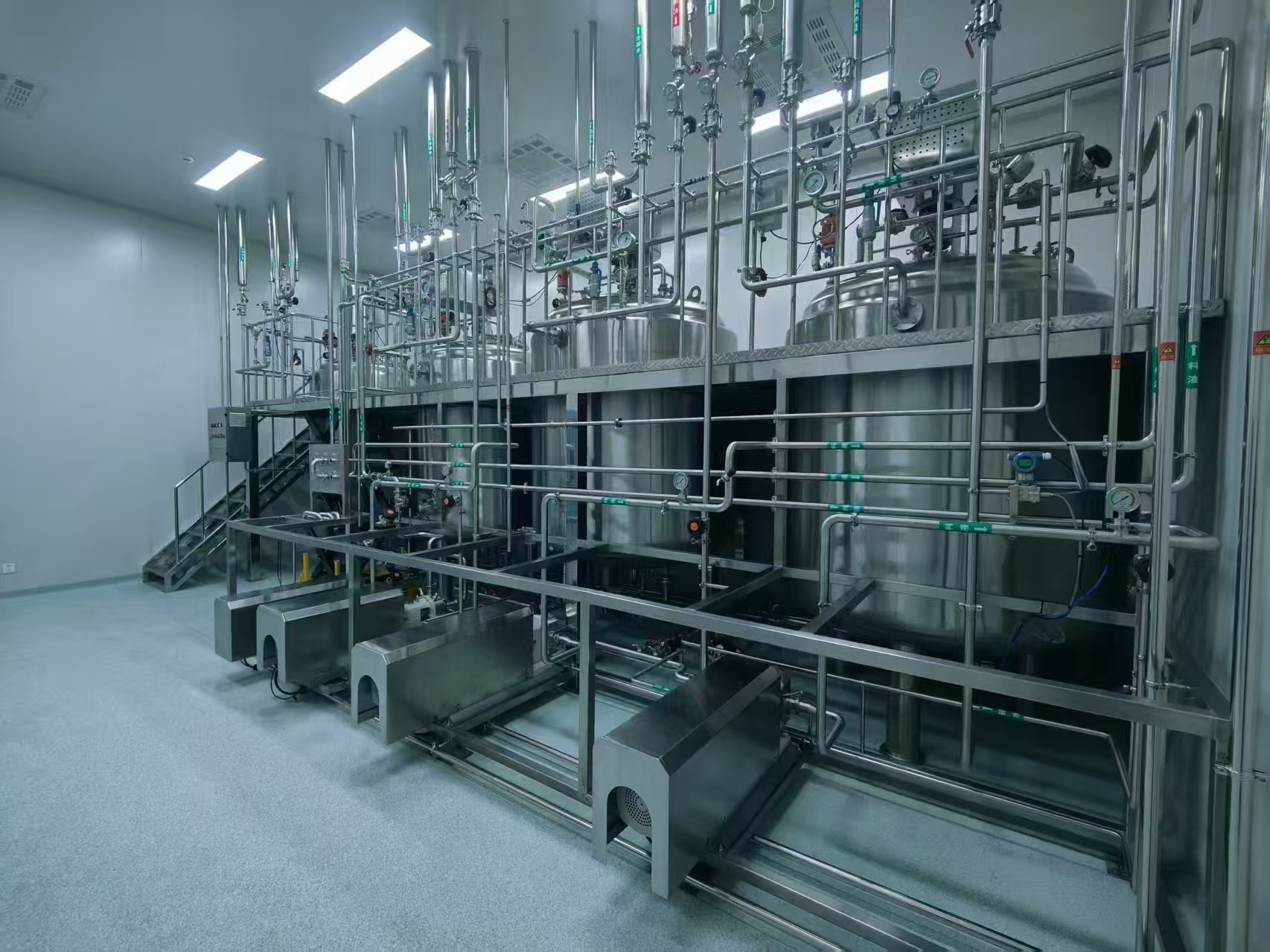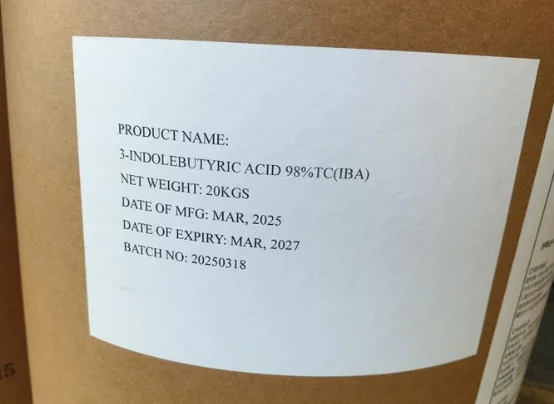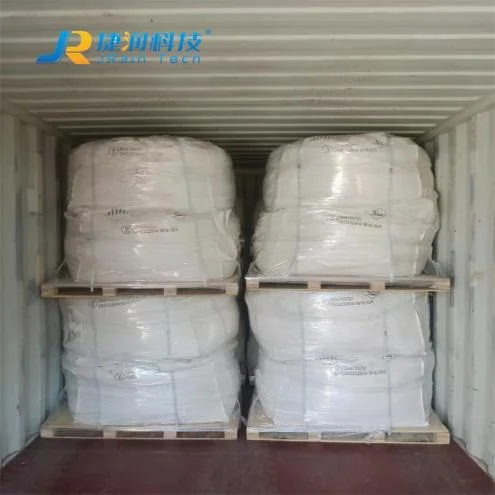Understanding Dinotefuran Insecticide: A Breakthrough in Pest Control
In the relentless battle against agricultural pests, the introduction of innovative chemistries marks pivotal moments for crop protection specialists. Among these advancements, dinotefuran insecticide stands out as a critical player, offering a unique mechanism of action against a broad spectrum of insect pests. Developed as a third-generation neonicotinoid, dinotefuran distinguishes itself through its distinctive furanic molecular structure, setting it apart from its nicotinic predecessors. This structural variation is not merely an academic detail; it confers upon dinotefuran a unique binding affinity to the insect's nicotinic acetylcholine receptors (nAChRs), specifically targeting a site distinct from other neonicotinoids. This novel mode of action makes it remarkably effective against pests that have developed resistance to other conventional insecticides, including those within the neonicotinoid class. Farmers and agronomists globally recognize dinotefuran for its systemic and translaminar activity, meaning it can be absorbed by the plant and transported throughout its vascular system, reaching hidden pests or those feeding on untreated foliage. Its rapid knockdown effect provides immediate relief from pest pressure, while its sustained residual activity ensures long-term protection, safeguarding yields and maintaining crop quality. The versatility of dinotefuran allows for various application methods—foliar sprays, soil drench, and seed treatments—making it adaptable to diverse agricultural practices and pest management strategies across a wide array of crops, from cereals and vegetables to fruits and ornamental plants. Its efficacy extends to piercing-sucking insects like aphids, whiteflies, thrips, leafhoppers, and planthoppers, which are notorious for transmitting plant viruses and causing significant economic damage.
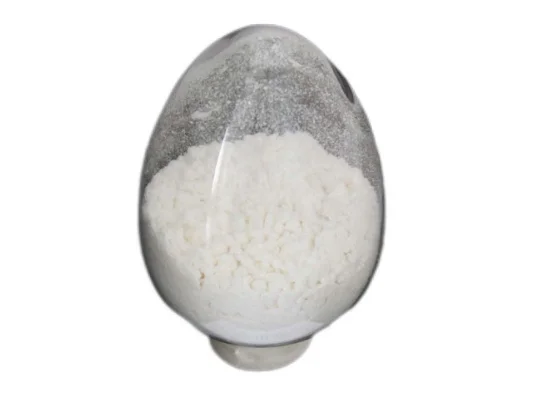
The Urgent Need for Advanced Insecticides: Data-Driven Insights
The global agricultural landscape faces an escalating challenge: the persistent threat of insect pests, which annually decimate vast portions of crop yields, leading to substantial economic losses and food insecurity. Recent analyses from organizations like the Food and Agriculture Organization (FAO) indicate that pests, diseases, and weeds contribute to a staggering 20-40% reduction in global crop yields each year. This translates into billions of dollars lost for farmers and a significant impact on the overall food supply chain. Beyond direct crop damage, pest infestations often necessitate costly remedial measures, including repeated pesticide applications, specialized labor, and post-harvest treatments, further eroding farmer profitability. The situation is compounded by a worrying trend: the increasing development of resistance in pest populations to established classes of insecticides. Intensive and often indiscriminate use of a limited range of active ingredients has exerted strong selective pressure, leading to the emergence of "super pests" that are increasingly difficult to control. For instance, populations of whiteflies (Bemisia tabaci) and aphids (e.g., Myzus persicae) have demonstrated alarming levels of resistance to multiple insecticide chemistries across various regions, jeopardizing the efficacy of cornerstone pest management programs. This scenario underscores an urgent, imperative demand for new active ingredients with novel modes of action—insecticides that can circumvent existing resistance mechanisms and provide reliable control. The advent of chemistries like dinotefuran, with its distinct molecular target and exceptional efficacy, represents a critical advancement in meeting this need. Without such innovations, the trajectory of crop losses due to pest resistance could accelerate, posing an unprecedented threat to global food production stability and farmer livelihoods, necessitating a shift towards more sophisticated and resilient pest management solutions.
Unpacking the Technical Superiority of Dinotefuran
Dinotefuran’s technical prowess stems from a combination of its unique chemical architecture and its resultant biological activity. As a member of the neonicotinoid family, it acts on the insect central nervous system, specifically as an agonist of the nicotinic acetylcholine receptors (nAChRs). However, its distinctive furanic ring structure, in contrast to the chloropyridyl or chlorothiazolyl groups found in older neonicotinoids, grants it a critical advantage: a different binding site on the nAChR. This particularity is paramount for managing resistant insect populations. Pests that have evolved metabolic or target-site resistance to other neonicotinoids often remain susceptible to dinotefuran, making it an invaluable tool for resistance management strategies. Beyond its unique mode of action, dinotefuran exhibits exceptional systemic and translaminar properties. Once applied, it is readily absorbed by plant tissues and translocated throughout the plant, offering protection to new growth and reaching cryptic pests that feed on the underside of leaves or within plant structures, which are often inaccessible to contact-only insecticides. Its high water solubility facilitates rapid uptake by roots when applied as a soil drench or granular formulation, providing prolonged protection from subterranean pests and early-season foliar feeders. Furthermore, dinotefuran demonstrates a rapid knockdown effect, swiftly incapacitating target pests upon exposure, which is crucial for preventing immediate damage and disease transmission. Despite its potent insecticidal activity, extensive toxicological studies have generally characterized dinotefuran as having a favorable ecotoxicological profile relative to older chemistries, particularly concerning mammalian toxicity, contributing to its broad acceptance in integrated pest management (IPM) programs. Its chemical stability ensures a sustained residual effect, reducing the frequency of applications and subsequently labor costs and environmental impact, while its compatibility with various formulations allows for flexible application methods suited to specific crop systems and pest pressures.
Navigating the Market: A Comparative Analysis of Dinotefuran Manufacturers
The market for active pharmaceutical ingredients (APIs) and formulated products derived from dinotefuran is competitive, with several global manufacturers vying for market share. While the core chemical compound, dinotefuran, remains consistent, significant differences can arise in product purity, formulation efficacy, regulatory compliance, and support services offered by various producers. Choosing the right manufacturer is not just about the active ingredient itself, but the entire value proposition. Factors such as a manufacturer's commitment to quality control, their investment in research and development for novel formulations, their global reach, and their responsiveness to customer needs play a crucial role in the ultimate success of a pest management program. Below is an illustrative comparison of hypothetical dinotefuran manufacturers, highlighting key differentiators that buyers might consider. This table serves as an example to demonstrate the types of criteria that should be evaluated, rather than a definitive endorsement of specific companies, as market dynamics and product offerings are subject to change.
Attribute | Manufacturer A (e.g., AgriChem Global) | Manufacturer B (e.g., BioProtect Innovations) | Manufacturer C (e.g., Precision AgroSolutions) |
Purity of Active Ingredient (%) | >98.5% | >97.0% | >99.0% |
Formulation Range | WP, SG, SC, GR | SG, SC | WP, SG, SC, EC, GR |
R&D Investment (Focus) | New uses, resistance management strategies | Cost-effective generic formulations | Enhanced delivery systems, combination products |
Regulatory Approvals (Key Markets) | North America, EU, Asia-Pacific | Asia, South America | Global, with extensive regional registrations |
Technical Support & Training | Comprehensive field support, workshops | Basic product information via online portal | Dedicated agronomists, custom protocols |
Supply Chain Reliability | High (multiple production sites) | Moderate (single primary site) | Very High (robust global network) |
Sustainability Initiatives | Eco-friendly packaging, residue reduction focus | Compliance with minimum standards | Advanced waste management, carbon footprint reduction |
This comparison underscores that while the active ingredient is crucial, the manufacturer's commitment to quality, innovation, and customer support significantly impacts the overall value and reliability of the dinotefuran product. Thorough due diligence, including requests for Certificates of Analysis (CoA), detailed safety data sheets (SDS), and efficacy trials, is essential when selecting a supplier.
Tailored Pest Management: Crafting Customized Dinotefuran Solutions
Effective pest management is rarely a one-size-fits-all endeavor. The dynamic interplay of specific crops, prevalent pest species, local environmental conditions, and prevailing agricultural practices necessitates a highly customized approach. Dinotefuran, with its versatile properties, lends itself exceptionally well to the development of tailored pest management solutions. For instance, in greenhouse operations battling persistent whitefly or thrip infestations on ornamental plants, a systemic soil drench of dinotefuran might be prescribed. This ensures continuous uptake by the roots, providing long-lasting protection with minimal spray drift concerns and reducing operator exposure. Conversely, for large-scale field crops like cotton or rice, where rapid intervention against migrating pests like planthoppers or aphids is critical, a foliar application of a soluble granule (SG) or suspension concentrate (SC) formulation of dinotefuran might be the most effective strategy, delivering quick knockdown and systemic action. Customization also extends to integrated pest management (IPM) programs, where dinotefuran can be strategically rotated with other chemistries to prevent resistance development. Agronomists often design spray programs that integrate dinotefuran at specific timings in the pest lifecycle or during critical crop growth stages, optimizing its impact while minimizing overall pesticide use. Furthermore, combination products featuring dinotefuran alongside other active ingredients with complementary modes of action can be developed to tackle complex pest complexes or to enhance efficacy against particularly resilient populations. For example, a formulation combining dinotefuran with a pyrethroid could offer both rapid contact kill and systemic long-term protection. Understanding the crop's vulnerability periods, the pest's biology, and the local environmental factors allows for the precise selection of dinotefuran formulation, dosage, and application timing, thereby maximizing pest control efficacy, minimizing environmental impact, and ultimately protecting farmer profitability. This bespoke approach ensures that the powerful attributes of dinotefuran are utilized most efficiently and sustainably.
Real-World Impact: Successful Applications of Dinotefuran
The practical application of dinotefuran has yielded significant success across a diverse range of agricultural systems globally, underscoring its versatility and efficacy. One prominent example comes from cotton production in regions grappling with resistance in piercing-sucking pests. Historically, whiteflies (Bemisia tabaci) and cotton aphids (Aphis gossypii) have posed formidable challenges, capable of causing direct damage through sap feeding and indirect damage by transmitting viral diseases and secreting honeydew, leading to sooty mold. In trials and commercial applications, dinotefuran has consistently demonstrated superior control, often reducing pest populations by over 85% within 72 hours of application, even against strains resistant to older neonicotinoids. This rapid and robust action helps protect cotton bolls, ensuring fiber quality and yield. Another compelling case study involves rice cultivation, particularly in Asian countries where brown planthoppers (Nilaparvata lugens) are notorious for causing "hopperburn" – widespread desiccation of rice plants. The systemic nature of dinotefuran, whether applied as a seed treatment or foliar spray, provides excellent uptake by rice plants, effectively targeting planthoppers feeding on the phloem. Field data has shown that targeted applications of dinotefuran can lead to a 20-30% increase in marketable rice yield compared to untreated controls, proving instrumental in safeguarding this staple crop. In high-value vegetable crops like tomatoes, peppers, and cucumbers grown in greenhouses, dinotefuran is invaluable for managing thrips, leaf miners, and aphids. Its translaminar movement means it can reach pests feeding on the undersides of leaves, providing comprehensive protection. For instance, in a randomized block trial on greenhouse tomatoes infested with western flower thrips, a dinotefuran treatment led to a 92% reduction in thrips populations over a two-week period, significantly outperforming alternative treatments. Furthermore, in the turf and ornamental sector, dinotefuran is highly effective against a variety of pests, including chinch bugs, mole crickets, and white grubs, preserving the aesthetic and structural integrity of landscapes. These examples collectively illustrate dinotefuran's capability to deliver substantial economic benefits and contribute to sustainable pest management by providing a reliable and potent tool for farmers and growers worldwide.
Future-Proofing Agriculture with Dinotefuran Insecticide Innovations
As the agricultural sector navigates an increasingly complex future, characterized by climate change, evolving pest pressures, and stringent regulatory landscapes, the role of innovative crop protection tools like dinotefuran insecticide becomes even more pronounced. The continued efficacy of dinotefuran against resistant insect populations positions it as a cornerstone in modern pest management strategies. Future innovations surrounding dinotefuran are likely to focus on several key areas. Firstly, there will be an emphasis on developing advanced formulations that enhance its performance, improve environmental safety, and facilitate easier, more precise application. This includes microencapsulated products for extended residual activity, granular formulations for targeted soil application with reduced off-target movement, and soluble concentrates optimized for compatibility with modern irrigation systems. Secondly, research will continue into synergistic combinations of dinotefuran with other active ingredients or biological control agents. These "tank-mix" or pre-formulated products aim to broaden the spectrum of control, increase efficacy, and provide robust resistance management strategies by presenting pests with multiple modes of action. Thirdly, the integration of dinotefuran into data-driven precision agriculture systems will grow. Leveraging remote sensing, AI-powered pest forecasting, and variable-rate application technology, growers will be able to apply dinotefuran more judiciously, targeting specific areas with high pest pressure and optimizing dosages, thereby minimizing overall chemical input while maximizing pest control outcomes. Finally, ongoing stewardship programs will ensure the responsible and sustainable use of dinotefuran, educating growers on best practices for resistance management, environmental protection, and worker safety. These proactive measures are critical for preserving the longevity and effectiveness of this valuable insecticide. By embracing these innovative pathways, dinotefuran will continue to play a pivotal role in safeguarding global food security, supporting farmer livelihoods, and contributing to more sustainable and resilient agricultural systems for generations to come.
Frequently Asked Questions About Dinotefuran Insecticide
Q1: What is dinotefuran and how does it work?
A1: Dinotefuran is a third-generation neonicotinoid insecticide with a unique furanic structure. It acts systemically by affecting the insect's central nervous system, specifically as an agonist of the nicotinic acetylcholine receptors (nAChRs). Its unique binding site differentiates it from other neonicotinoids, making it effective against a broad spectrum of piercing-sucking insects, including those resistant to other chemistries.
Q2: What types of pests does dinotefuran effectively control?
A2: Dinotefuran is highly effective against a wide range of piercing-sucking insects, such as aphids, whiteflies, thrips, leafhoppers, planthoppers, mealybugs, and some species of beetles and cockroaches. It is widely used in crops like cotton, rice, vegetables, fruits, and ornamental plants.
Q3: Is dinotefuran a systemic insecticide?
A3: Yes, dinotefuran is a highly systemic insecticide. It is readily absorbed by plant roots and foliage and translocated throughout the plant's vascular system, providing protection to new growth and reaching pests feeding on various parts of the plant, including those in hidden locations.
Q4: How does dinotefuran help with insecticide resistance management?
A4: Due to its unique furanic chemical structure, dinotefuran binds to a distinct site on insect nAChRs compared to other neonicotinoids. This novel mode of action allows it to effectively control pests that have developed resistance to other neonicotinoids or other insecticide classes, making it a crucial tool in resistance management programs when used in rotation or combination.
Q5: What are the common application methods for dinotefuran?
A5: Dinotefuran can be applied through various methods, including foliar sprays, soil drench applications, granular formulations for soil incorporation, and seed treatments. The choice of application method depends on the target crop, pest species, and local environmental conditions.
Q6: Is dinotefuran considered safe for beneficial insects or the environment?
A6: While highly effective against target pests, like all insecticides, dinotefuran requires responsible use. Its ecotoxicological profile is generally considered favorable compared to some older chemistries, particularly regarding mammalian toxicity. However, it can affect beneficial insects, including pollinators, if not applied judiciously. Adherence to label instructions, proper timing, and integration into IPM strategies are crucial for minimizing environmental impact.
Q7: What are the advantages of using dinotefuran in Integrated Pest Management (IPM)?
A7: Dinotefuran's unique mode of action, broad-spectrum efficacy against resistant pests, systemic properties, and formulation versatility make it an excellent fit for IPM programs. It allows for targeted applications, reduces the need for frequent spraying, and can be rotated with other chemistries to prevent resistance. Its inclusion supports sustainable pest control by optimizing pest suppression while minimizing overall pesticide load.



